What makes a book appealing to the reader is not only what is written within it, but also how it looks and feels. Printing paper of a book surely affects the readers. But choosing the right paper to print your book is not that easy as it seems. With a plethora of types of paper available today, it often becomes tricky for the authors and publishers to choose the right one for printing books.
Knowing the types of paper you should use for printing your book is necessary as it affects how the reader will feel about your book. It affects the reader each time he/she will touch the paper of your book. Having the right paper can make your reader dive deeply into your book. On the other hand, if the paper of your book is not up to the mark, it may distract the reader.
The choice of paper also affects your budget. Paper costs more than any other process in book manufacturing. About 30% to 60% of the total budget of book manufacturing is spent only on paper. The price of paper varies depending upon the type you are using for printing your book and choosing the right paper can save a lot of money.
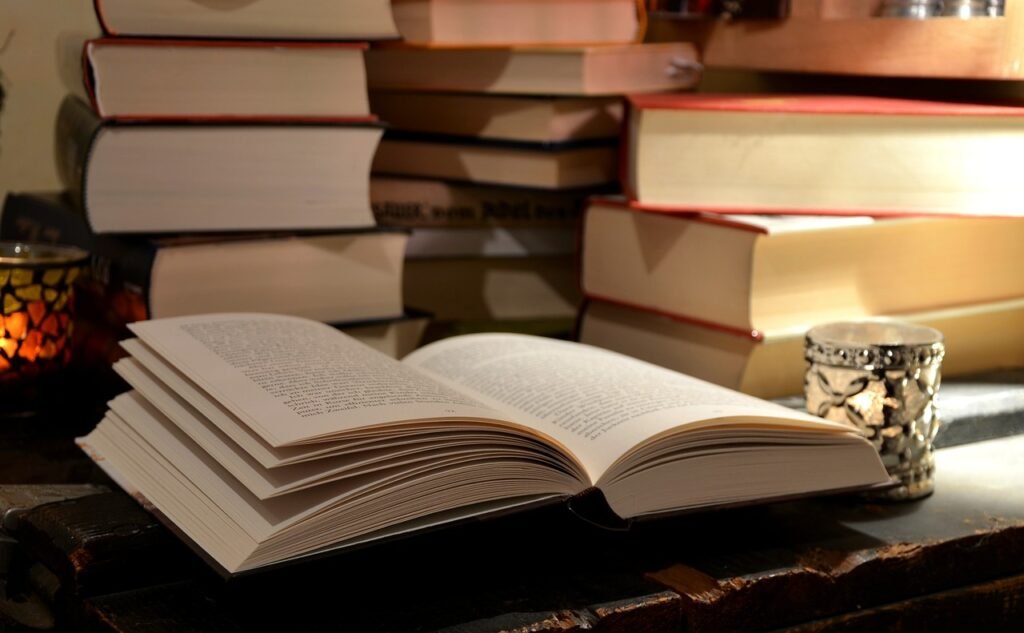
No doubt, choosing the right paper is a hectic task. If you are also facing the same perplexing situation, then we have the solution for you. In this article, we are going to guide you about everything you need for choosing the perfect paper for your book. The article will be focused on types, key properties, and a good deal of other necessary information about the paper for printing a book.
Read this article and share it with your friends who are searching for guidelines to choose the right printing paper for a book. So, let’s get started.
Types of Paper
Getting a detailed knowledge of the types of paper is essential before printing a book. You can choose the best paper for printing your book only after knowing the available types of paper. Let’s learn about them, so you don’t regret not knowing about them after printing your book.
Uncoated Paper
Uncoated paper is a type of paper that has no coating. All the coated paper stocks arise from this type. Being uncoated, this type of paper has a porous, and rough surface. The uneven surface with pores makes uncoated paper an excellent absorbent of ink. There are two major categories of uncoated paper:
Woodfree Paper
Woodfree paper is a sub-type of uncoated paper that is manufactured by removing lignin from the fibers of the wood. It is also known as offset paper. The process of removing lignin from the fibers provides excellent whiteness, opacity, and runnability.

The wood-free paper stock has better ink absorbance. The ink tends to spread outward and provide a more precise and darker image than any other paper stock. Increased absorbance of ink provides a better image, but it reduces the rub resistance.
Woodfree paper comes in various weights. You can get this stock in 60gsm, 70gsm, 90gsm, 100gsm, 120gsm, 140gsm, and 160gsm. This paper is mostly employed for manufacturing endpapers of hardcover books. 120gsm and 140gsm weights of this stock are used for manufacturing endpapers.
Textured Paper
Texture paper is another sub-category of uncoated paper that comes in a broad range of selection. Some textured papers are grained while others are manufactured by processing with different materials.
Given different ways of processing, textured paper could have various appearance and touching. Some could be grained lines, some being crumpled, some may look like leather whereas it’s indeed just paper.
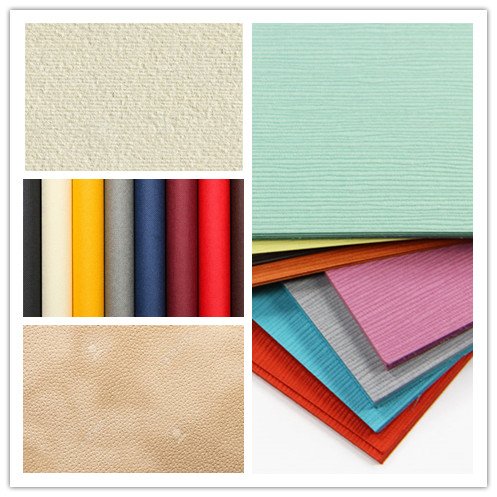
It is mostly used for making book covers. Due to its unique appearance, various types of textured paper are also used for decorative purposes.
Coated Paper
Coated paper is manufactured by applying a coating of white clay material over the uncoated paper. The clay material fills the pits in the uncoated paper and provides a smooth texture to the paper.
Coating casts a shiny and glossy look to the paper. The coating also reduces the tendency of the paper to absorb the ink. The ink tends to stay on the paper and appears glossier, deeper, and sharper than on uncoated paper.
Though coating makes the ink smoother and richer, it limits the absorbance of ballpoint ink. Ballpoint ink often takes a lot more time to dry on coated paper than uncoated stock. Coated paper has variable types depending upon the coating material. You can find matte, silk, glossy, water coating, or UV finish paper.
Matt Art Paper
The matt art paper (or called “satin paper”) contains little coating and does not provide much glare to the paper. It makes the paper look softer and can easily deal with smudges, stains, fingerprints, and dust. This paper has a stiff texture and books consisting of matt art paper are less likely to “bend over”.
It provides better prints by absorbing more ink and is much easier to read text on this paper stock than any other coated paper. However, matt art paper lacks color sharpness and the image does not look as vibrant as on gloss art paper.

Though colors are not as vibrant as those appear on glossy art papar, matt art paper is still widely used for book with images rich in colors. Part of the reason is that the paper glare is not that visually intrusive as the glossy art paper. The comparatively high strength of the paper, which helps books last longer, is also another important reason of choosing matt art paper for printing books.
Matt art paper is available in 80gsm, 128gsm, 157gsm, 200gsm, and 300gsm weights.
Glossy Art Paper
The gloss coating provides a higher shine and glare to the paper. After manufacturing the paper, an image is printed on it and then a varnish is applied over it to make it shiny and glossy. This coating makes the color pop giving smoother, richer, and deeper images with stunning color contrasts.
This paper offers a vibrant effect and photos and graphics look excellent on it, however, it easily gets sticky when exposed to high moisture content. Books with gloss art paper easily bend over and are not a good choice for long-term archiving.
Given its high level of glareness, glossy art paper is more and more unlikely to be used for printing inner pages of books. The most commonly used scenario for glossy art paper is for printing the PLC cover of hardcover books, most likely using the 128gsm option.

Silk Coated Paper
Silk coating provides a little shine to the paper. It has more glare than uncoated stock, but lesser as compared to a glossy one. Silk coated paper has improved and sharper colors and provides high-quality images.
Silk coated paper is very much popular with the commercial advertising printing, as it brings vibrant colors while does not have too much visual intrusion because of the high coating glare.
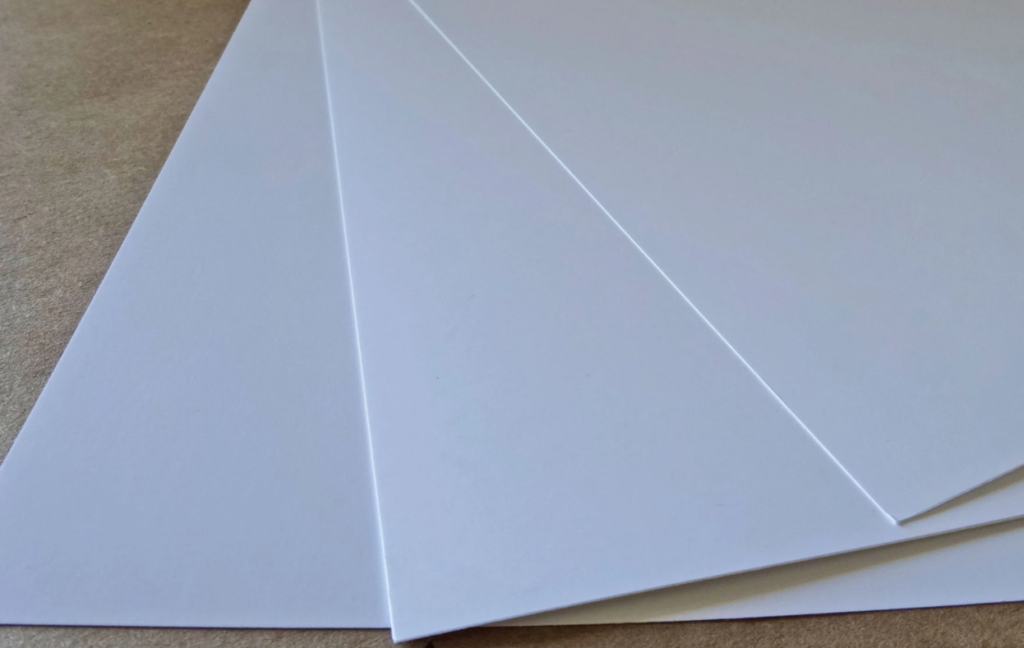
Acid-free Paper
Acid-free paper is manufactured by treatment with mild bases that neutralize the acids of wood pulp. Calcium bicarbonate and magnesium bicarbonate are used for neutralizing natural acids. Acid-free paper is also treated for buffering the formation of new acids.
Acid-free paper is a high-quality paper stock that can last for years without turning yellow. It is also an excellent choice for long-term archiving as it does not break down easily.
Synthetic Paper
Unlike other types of paper, synthetic paper is manufactured from synthetic resin extracted from petroleum. The synthetic paper offers properties of regular paper as well as plastic film.
Like regular paper, synthetic paper is white, soft, and can be printed. It also offers resistance against grease, corrosion, chemical, and water that makes it a durable stock for printing books.
One famous product of synthetic paper is the DuPont™ Tyvek® . DuPont™ Tyvek®, which is a spunbonded material made from high-density polyethylene fibers, offers an unique material solution for printing durable, recyclable, water-resistant and tear-resistant products. As a cost-effective and versatile material, Tyvek® can be easily converted with coated, embossed, hot foil stamped, perforated and hot sealed.
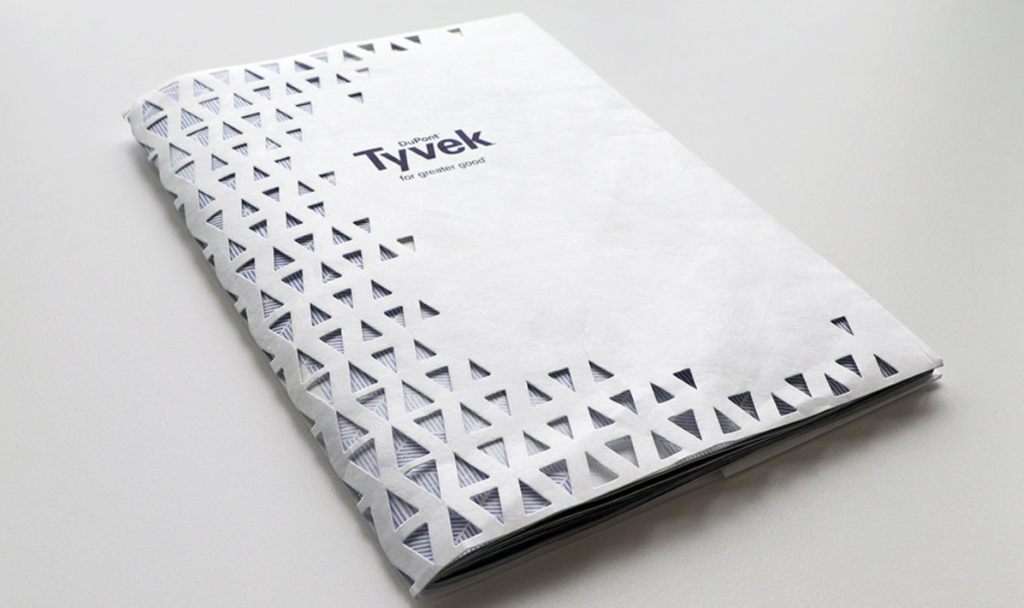
Eco-Friendly Paper
Eco-friendly paper is a unique type of paper that contains a small carbon footprint. Unlike regular paper, it has little impact on the environment. The eco-friendly paper has two types. One is FSC paper and the other is recycled paper.
FSC Certified Paper
FSC is an international organization that protects forests all over the world by increasing timber production. FSC certified paper contains a logo. The logo ensures that the paper is manufactured of wood from a well-managed forest.

FSC certified paper is further divided into the following three levels:
- 100% FSC Certified Paper is manufactured of wood that is completely sourced from FSC certified forests.
- Recycled FSC Paper is made from the reused paper or wood.
- FSC Mix Paper is manufactured from FSC certified or controlled forests or from recycled material.
Recycled Paper
Recycled paper is manufactured of used paper instead of wood. During paper recycling, used paper is taken and is processed in large recycling plants to remove ink and other materials.

Recycled paper stocks are not manufactured of 100% used paper. It contains some amount of fresh wood. A greater percentage of used paper is recycled paper stock makes it eco-friendly.
Key Properties of Paper
For choosing the perfect paper for printing a book, you need to carefully observe every aspect of the paper. Following are some key properties that you should keep in mind while picking out the best paper for printing your book.
Weight
Basis Weight of Paper
Basis weight is a fundamental property of paper and refers to the weight per unit area of a paper. It is also known as grammage. The basis weight equals the ream (500 sheets) weight of the base size.
Because the starting base size is not the same between paper types, the basis weights do not correspond directly (80 Text is much lighter than 80 Cover). Below image clearly explains the basis weight for different paper types.

Weight Conversion
For measuring the weight of paper, “gsm” is not the only unit. In countries such as United States or Canada, units such as “pound” is also used as a unit for measuring the weight of the paper. Such differences may bring some inconvenience especially when the publisher/ author and printer are in regions with different measurement units.
There’re indeed some formula to calculate the paper weight under different units. However, the easiest solution would always be going to some website with the readily available converters. Click the link here and you will have the tools for very quick conversion.
Size
The size of the paper has a remarkable impact on the basis weight of paper. Aside from the previously mentioned knowledge about calculating the basis weight of paper using the standard paper size, there’re several other important issues that worth highlighting.
Standard Sizes
There have been many standard sizes of paper at different times and in different countries, but today there are two widespread systems in use: the international standard (A4 and its siblings) and the North American sizes.
By clicking the link, you will find a comparatively full map of the paper sizes based on the standards all around the globe.
Signature Printing
When printing, multiple pages are allocated on both sides of one single larger-size sheet (called “signature”) and being printed together. The printed signatures will then be folded, paginated, sewn, binded and trimmed, eventually bringing a completed book into life. Based on the different trim sizes of the completed book, one signature (both sides together) usually have 8/ 16/ 24/ 32/ 64 pages. Below is an example layout for a 16-page signature.

China Standard Size
In one of the global printing hub of the world – China, 787mm × 1092mm, 889mm × 1194mm, and 635mm × 965mm are three most commonly used sizes for sheet-fed paper.
Correspondingly, 210mm × 285mm, 185mm × 260mm, and 210mm × 297mm are their trim sizes respectively.
By stating the standardized size does not mean one can only design your books with those trim sizes. Instead, you can use other sizes of paper for printing your book, but it may take a lot of time for customizing the size of the printing sheet.
Whiteness
Whiteness is a measurement of the amount of reflectance of red, blue, and green wavelengths that the eye can observe, while looking at the paper. Paper with higher whiteness offers better printing. Whiteness makes the colors look sharper and brighter and provides a more realistic print.
However, excessive whiteness looks irritating due to sharp color contrast. It brings fatigue of eyes and distracts the reader. If you are using paper stock of high whiteness for printing images with rich colors, use a light-colored background for the text. It reduces the level of contrast and keeps your eyes stress-free. You can get a more clear idea about the whiteness of paper at Sappi.
Opacity
The opacity of a paper is the tendency of paper to block the passage of light and visibility of the printed image on the backside. It is one of the fundamental properties of paper. Opacity depends on the thickness, degree of bleaching of the fiber, and coating applied to the paper. The uncoated stock offers more opacity than the coated stock of the same grammage as the coating makes the paper translucent.
If the paper has too low opacity, the image of the reverse side will interfere with the image of the front side making it hard for the reader to read the content. That’s the reason, paper with higher opacity is better than translucent one.
Thickness
Thickness is a measure of the bulk of the paper. The thickness of paper also affects the thickness as well as the weight of the book. Usually thicker paper stocks are heavy. However, thickness is not a hard and fast criterion for estimating the weight of paper. Paper stocks with the same weights can have a variable thickness.
One matter worths extra attention regarding paper thickness is the High Bulk paper. Simply speaking, High Bulk paper is the kind of the paper that same weight with higher thickness. A few printers understand that somme publishers prefer thicker books for higher listing prices, and presumably higher paper weight leads to more paper thickness. As a result, those printers may charge the paper with higher grams, but actually use the High Bulk paper with lower weight.

By doing so, the books appear to have the expected thickness, but the publishers are actually paying more for paper with lower weight. It is not extra cost that publishers paying the only problem for High Bulk paper, the bigger problem (for picture book publishers especially) is at the binding stage. When the printed High Bulk paper is folded, very likely the some powder-like white dots (the exact material which makes the paper thicker with the same weight) will be scattered over the ink.
So, make sure to check the weight of the paper for checking the quality of the paper and not the thickness.
Printing and Binding
For bringing perfection to your book, just knowing the types of paper is not enough. For the best results, you should also know about the paper requirements for printing and binding. Following are some printing and binding considerations that you need to choose the right paper for your book:
Printing
B&W Printing
B&W printing or black and white printing is often used for printing unique images. B&W printing is a little trickier than color printing. B&W printing is done on a paper stock that has considerable opacity. The opaque paper prevents the ink from going to the reverse side of the paper and provides a vibrant image. Gloss art paper is the most suitable paper stock for B&W printing.

Color Printing
In color printing, either the usual CMYK printing or Pantone printing can be largely influenced by the choice of paper.
Given the effect of materials, coated paper, be it matt or glossy art paper, usually reflects more shiny colors for printing images. So if one aims to print a book with images rich in glare, coated paper is always the right choice.
On the contrary, uncoated paper, given its porous texture, is more ink-absorbing than coated paper stock. As a result, colors printed on uncoated paper usually appears darker than that on its coated counterpart.
In order to accurately reflect the colors printed on different paper, it is important to ask the printers about the ICC profiles they’re using and embed the profile data accordingly in the files. Also, for printing Pantone colors, always make sure what kind of paper you are using (coated or uncoated) and choose the color number on corresponding Pantone palettes (either with the printed version or the online Pantone palette.)

Paper Grain
Paper grain is the direction of fibers in a sheet of paper. The paper grain affects the printing. Printing is done alongside the direction of paper grain. If printing is done against the paper grain, the paper sheets will begin to wrap.
Weight of Paper
The weight of paper is also a considerable factor for printing. Large print-run web press. Web press can’t handle heavy paper for large print-run. Usually, paper with 80gsm weight or lower is used for such printing.
Binding
Binding is also affected by the type of paper you are using. The thickness of the paper is the most important factor to consider while binding a book. It is a general rule that the harder the paper, the harder it is to bend over the page.
Choosing thick paper for binding photo books and deluxe books provides them a luxurious appearance. However, for binding novels and textbooks, a thinner paper also works well.
Usage Preferences
When choosing the right paper for printing your book, there’re indeed some common preference of paper for certain types of books. Though not a must-do guideline, knowing about such preferences may be helpful for choosing the paper stock for specific types of books, especially if you do not have any specific idea in mind. Following are few preferences that can help you on your way to print your book
Novels
For printing novels, uncoated paper stock is the best choice as plane text looks perfectly fine on paper with little glare. Also, the paper for printing novels should be opaque, so the reader could easily read the content. If you choose a little translucent paper, the text on the one side of the page will interfere with the text on the other side, providing a distractive reading experience.
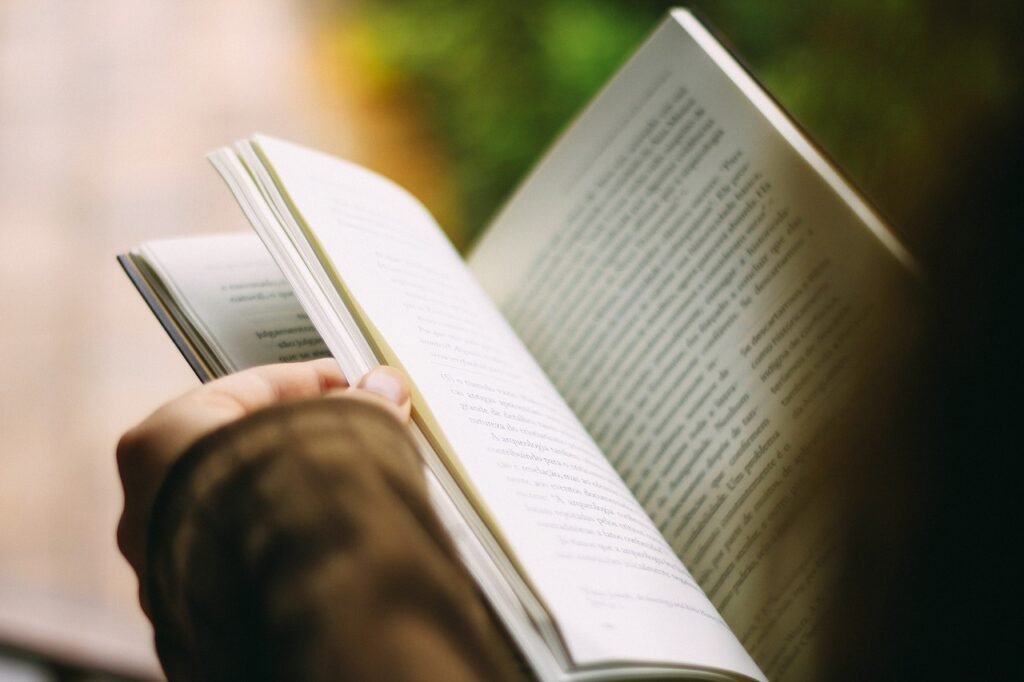
Textbooks
Most textbooks are printed on uncoated paper to provide a clear image of the text. Dull-coated paper is also employed sometimes for printing textbooks. Uncoated or dull coated paper offers less light reflection and makes it easy for the reader to concentrate on the text.
Also, if you are preparing a large print-run textbook printing which needs the web-fed press, it is necessary to choose the text paper under 80gsm.
Picture Books
Picture books are of various types, like photo albums, art books, menu books, and recipe books. All these books need a shiny and lustrous appearance. That’s why many picture books are mostly printed on thick coated paper.
In the meantime, printing picture books with uncoated paper is gradually becoming a trend for many publishers, especially for art, travel and cookbooks. The porous texture and ink-absorbing uncoated paper will somehow generate a more “arty” flavor of the books, be it the colors or the feeling touched by fingers. However, it is important to bear in mind that different ICC profiles should be applied to different types of paper, and printing on uncoated paper requires more careful ink control technique by the press operators.

Children Books
Similar as picture books, most of the children’s books consist of colorful pictures and beautiful graphics, so paper with shiny colors is preferred for their printing. Coated paper is preferably used for children’s books. But as what other picture books do, uncoated paper is also becoming more and more popular for children books, especially for juvenile fictions and publishers/ authors who want their books to be more “arty”.

FAQ
Q: What is the best paper for book printing?
For printing a book that contains numerous graphics and photographs, gloss paper is the best choice. While for books that contain text only, uncoated paper is a better choice than any other paper stock.
Q: How do I choose a print paper?
You can choose a print paper by examining the following aspects in a paper stock:
- Each type of book needs a particular kind of printing paper. So, in the first step look at the book, you are going to print. Whether it is a journal, storybook, biography, booklet, or any other type.
- Choose the basis weight of the paper stock.
- Check the opacity of paper. Choose a paper stock that has good opacity.
- Check the types of printing paper and choose one that suits the best for your book. Check whether a coated paper will suit your book or an uncoated one.
- Also, check the consistency of paper and select a paper stock that has a better consistency.
- Strength is also an important factor to note while choosing a print paper.
Q: What kind of paper are books printed on?
Different kinds of paper are employed for printing different types of books. Novels, poetry books, and biographies are printed on uncoated paper stocks with 80gsm basis weight. 100gsm uncoated paper stock is employed for printing anthologies and history books. Children’s books, photo books, and recipe books are printed on gloss-coated books. For photo books, silk-coated paper is also used.
Q: What’s the difference between coated and uncoated paper?
Coated paper has a smooth, glossy, and shiny surface due to coating. The coating makes the color look richer and deeper. The coated paper offers greater color contrasts. The coating gives a better appearance to graphics and photographs. However, ballpoint pen ink does not dry on it easily.
Uncoated paper lacks shine and has a porous surface. The uneven surface of uncoated paper easily absorbs ink and provides a darker image.
Q: What is 50 offset paper?
50# offset is the thickness of paper in offset grade having dimensions 25×38. 500 sheets of 50# offset weigh 50 pounds.
Q: What kind of paper is used for journals?
For journals matte paper stock is used. Usually, matte paper weighing 105gsm or 120gsm works well for printing journals.
Q: What material is used for book covers?
Various materials are used for making book covers. Bonded leather, buckram, felt, and coated papers are mostly used for book covers.
Q: How can you tell the quality of the paper?
A person can tell the quality of paper by checking the following properties in a stock:
- Paper opacity
- Consistency of paper
- Strength of paper
- The basis weight of the paper
Q: What kind of paper is used for your textbook? What size is it?
Uncoated paper with a basis weight between 52gsm to 60gsm is used for the textbook. The sizes of textbooks also vary. Usually, Textbooks come in 6inches × 9inches, 7inches × 10inches, and 8.5inches × 11 inches.
Q: What makes paper shiny?
Coating applied to the uncoated paper increases its glare and makes it shiny. Silk finish adds a little shine to the paper, while gloss coating gives a better glare to the paper.
Q: How do I know the GSM of paper?
GSM of paper stock can be calculated by dividing the weight of a single sheet of paper in grams by its area in centimeter square.
Q: What is the difference between the cardstock and text-weight paper?
Cardstock is thicker and more durable than text-weight paper. Text weight paper is uncoated paper stock. On the other hand, cardstock comes as coated as well as uncoated paper stock.
Q: What weight is book paper?
The weight of the book varies greatly. Various weights of book paper are available today. 70gsm, 80gsm, 100gsm, 115gsm, 120gsm, 135gsm, 170gsm, 250gsm, and 300gsm are some common weights of book paper.
Q: What are soft book covers made of?
Soft book covers are usually made of paperboard or thick paper. Unlike hard covers, soft covers are held to the inside pages by glue.
Q: What is the thickest paper you can buy?
Paper stocks of various thicknesses are available today. Paper stock with 590µm is the thickest paper stock that you can buy.
Summary
Choosing the right paper can improve the readability of your book and make it look spectacular. It can also help you control the book manufacturing cost. The availability of various types of paper stocks can help you choose the right one for your book.
About Huaxin Printing
Huaxin Printing, with 33 years of experience in book printing, provides authors and publishers globally the professional advice and manufacturing service of paper selection, layout design, color printing, and bookbinding service. Our clients include Lonely Planet, Les Edition de Saxe, and most major art book publishers in China.




